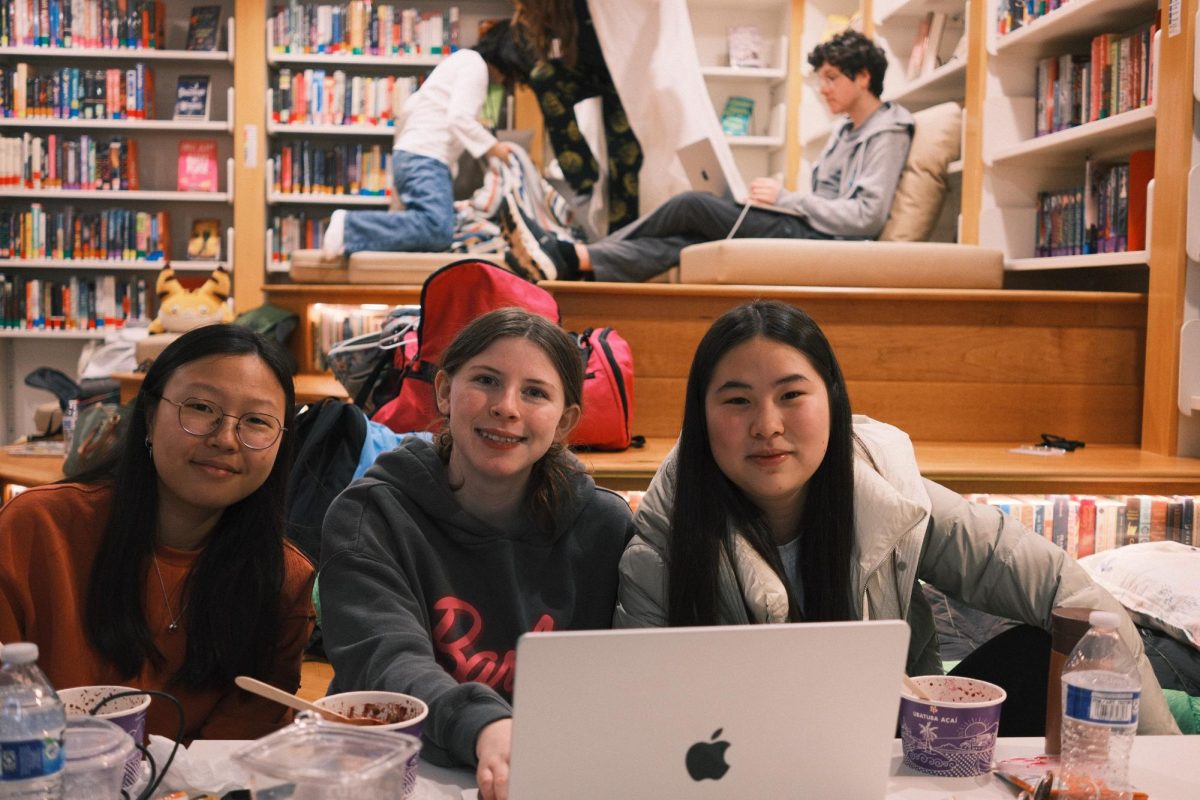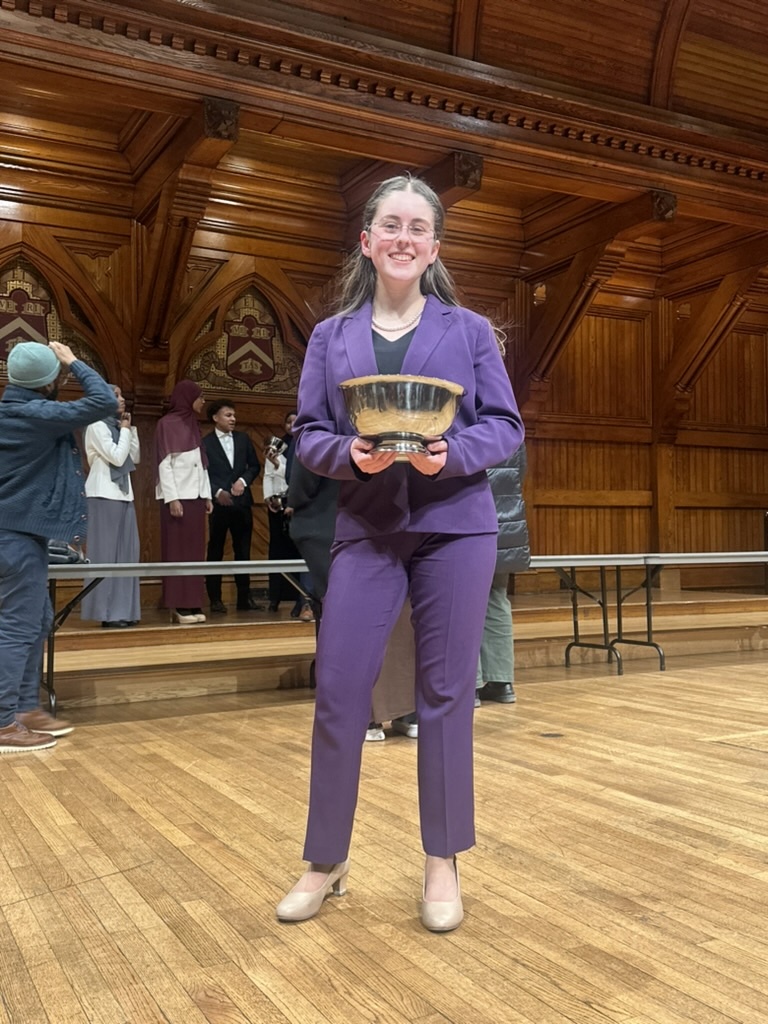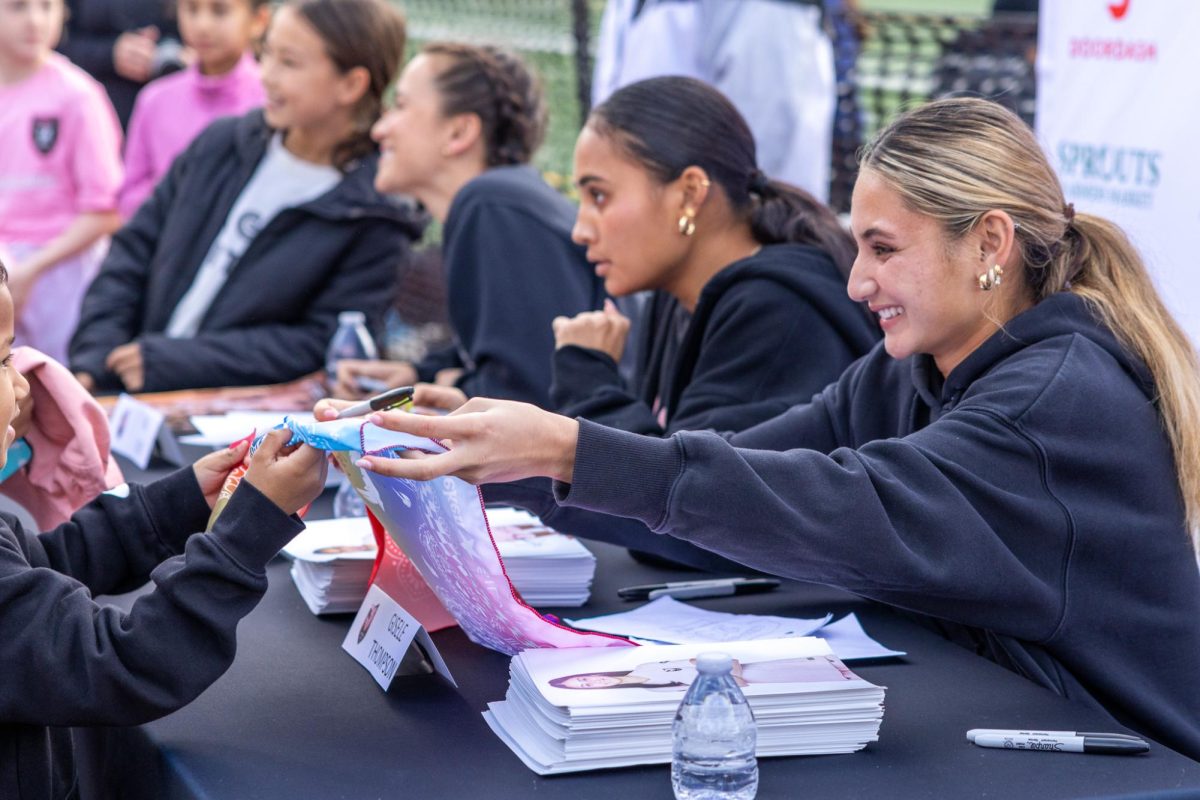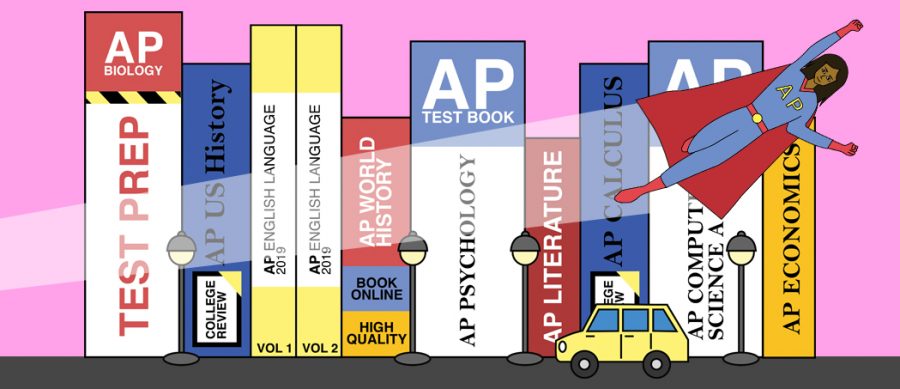On the first day of her senior year, Tivoli Nguyen ’17 entered her Advanced Placement Physics C class and chose a desk between two boys already seated. After the rest of Nguyen’s classmates filed in—one boy after another—she realized she was the only girl in her class of seven.
“It was so intimidating to walk into a classroom full of guys, who I wasn’t particularly close with,” Nguyen said. “They were all loud and overconfident. Especially because I’m usually pretty quiet in any normal class, it was initially scary to ask questions in this boy-heavy environment.”
AP Physics C has historically been a male-dominated course, Upper School Deans Department Head Beth Slattery said. This year, however, the gender gap has been greatly reduced with eight female and nine male students enrolled between the two classes.
Gender balance is now significantly more common in AP and Honors classes than in previous years. According to a workload survey in 2013, the percentages of male seniors taking five or more AP classes and juniors taking three or more were nearly double those of female students. However, results from a 2018 survey administered by Challenge Success, an organization associated with Stanford University, showed more equal numbers.
Last year’s Challenge Success Survey showed that 20 percent of 109 senior girls surveyed reported taking five or more AP or Honors classes, compared with 23 percent of 107 senior boys.
These numbers are essentially even, since the difference between them is not statistically significant given the sample size, Challenge Success survey task force member and science teacher Jesse Reiner said.
“I’m so glad to hear that there are more girls taking higher level classes,” Nguyen said. “The lack of female representation was something that discouraged me personally, and it needed to be changed. I’m excited for more girls to enter high level classes, where they’ll see that they too can succeed.”
After the workload survey in 2013, Slattery headed a task force committee to study differences between male and female students’ experiences at the school. The committee held a professional development day to raise awareness about ways in which gender influences learning, Slattery said.
Upper School Dean Chris Jones said he believes that the gender gap in AP classes has since closed due to these efforts.
“There’s the confidence piece that’s just huge,” Jones said. “We’ve tried to make sure all of our students feel as confident as possible. As a result, in fields that have been dominated by one group or another, the group that has been less represented tends to feel a better and bigger sense of belonging.”
In addition, the number of female role models for girls has increased within the school. Women teaching previously male-dominated courses, such as science teacher and upper school scheduler Krista McClain and science teacher Karen Hutchison, have been influential in bridging the previous gender gap, Slattery said. Also, both AP Chemistry teachers are female this year.
Though the gender balance is just closing within the school, females have consistently outnumbered males in AP courses across the country. According to the College Board’s annual National Reports, girls have been over-represented by approximately 30 percent since 2013, and the percentage continues to increase.
Additionally, Slattery said the school previously treated females as more fragile than males when assessing academic schedules, due to subconscious gender biases.
“Parents were often more willing to let their boys push themselves to do something hard than their girls, but I think we’ve gotten away from that,” Slattery said. “I can acknowledge that I was cautious because I would worry about what she would do if she got a bad grade, if she would wither or fall apart. I just didn’t worry about the boys that way, and I think that was probably not fair.”
The school’s lack of open enrollment to AP classes may also have been a factor. For example, in order to take advanced science and math courses, students often must start on or jump to advanced tracks before entering the Upper School, Slattery said. Fewer girls initially pursued these course paths, which led to the imbalance in upper division courses.
However, the gap has since bridged, Slattery said. Last year’s survey even indicated female over-representation in AP and Honors classes within a small portion of the school. There were 14 female and five male juniors who reported taking four or more AP classes. Though the sample size was very small, this statistic, along with the overall increase in females in advanced classes, shows promise for the future, Reiner said.
Meera Sastry ’19 was one of the 14 junior girls from the survey. Last year, Sastry’s course load included AP Chemistry, AP U.S. History, AP Spanish Literature and AP Calculus BC 11. Sastry said the effect of gender balance in APs created a more intellectually stimulating environment.
“Diversity of all kinds is essential to any class, and a range of perspectives adds a lot of depth to class discussions and to the way the students approach the subject material,” Sastry said. “For example, discussing gender in literature is really only productive if the class has a good gender balance and a range of experiences with gender can be heard.”
This year, there is also gender parity in advanced science courses such as AP Chemistry and AP Physics C, Slattery said. However, while males and females are equally represented, gender divisions still affect the class dynamics, AP Physics C student Clara Ross ’19 said.
“We’ve tended to sit with with our friends of the same gender to the extent that, both last year and this year, there has been a clear physical line down the center of the classroom dividing females and males,” Ross said. “When the class gets rowdy, it’s also harder for females to be heard.”
Furthermore, the gender gap still persists in society. According to Forbes, women are significantly underrepresented in fields such as business, politics, engineering and technology. La Femme Head of Art and Design Lilah Weisman ’20 said she thinks education at the high school and college levels are extremely important in closing this gap.
“The more young girls see women represented in the public sphere with professions that require high levels of education, the more they understand that they can be like them,” Weisman said. “They’ll start thinking early, and they can take AP and honors classes to use them to their advantage. Each moment the number of girls in AP and honors classes increases, we get further and further away from our history of unequal educational opportunities offered to women.”


























